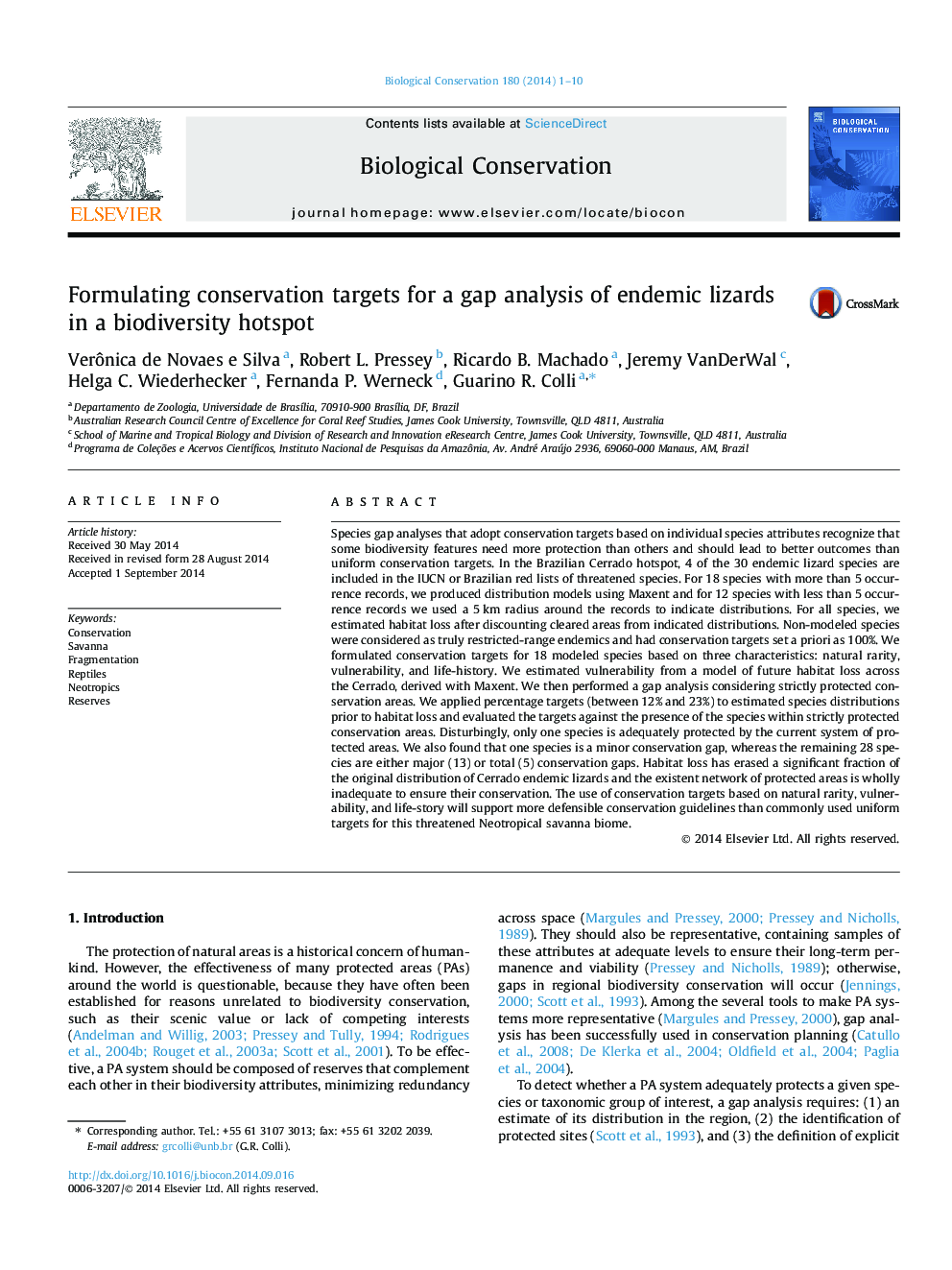| Article ID | Journal | Published Year | Pages | File Type |
|---|---|---|---|---|
| 6299576 | Biological Conservation | 2014 | 10 Pages |
Abstract
Species gap analyses that adopt conservation targets based on individual species attributes recognize that some biodiversity features need more protection than others and should lead to better outcomes than uniform conservation targets. In the Brazilian Cerrado hotspot, 4 of the 30 endemic lizard species are included in the IUCN or Brazilian red lists of threatened species. For 18 species with more than 5 occurrence records, we produced distribution models using Maxent and for 12 species with less than 5 occurrence records we used a 5Â km radius around the records to indicate distributions. For all species, we estimated habitat loss after discounting cleared areas from indicated distributions. Non-modeled species were considered as truly restricted-range endemics and had conservation targets set a priori as 100%. We formulated conservation targets for 18 modeled species based on three characteristics: natural rarity, vulnerability, and life-history. We estimated vulnerability from a model of future habitat loss across the Cerrado, derived with Maxent. We then performed a gap analysis considering strictly protected conservation areas. We applied percentage targets (between 12% and 23%) to estimated species distributions prior to habitat loss and evaluated the targets against the presence of the species within strictly protected conservation areas. Disturbingly, only one species is adequately protected by the current system of protected areas. We also found that one species is a minor conservation gap, whereas the remaining 28 species are either major (13) or total (5) conservation gaps. Habitat loss has erased a significant fraction of the original distribution of Cerrado endemic lizards and the existent network of protected areas is wholly inadequate to ensure their conservation. The use of conservation targets based on natural rarity, vulnerability, and life-story will support more defensible conservation guidelines than commonly used uniform targets for this threatened Neotropical savanna biome.
Related Topics
Life Sciences
Agricultural and Biological Sciences
Ecology, Evolution, Behavior and Systematics
Authors
Verônica de Novaes e Silva, Robert L. Pressey, Ricardo B. Machado, Jeremy VanDerWal, Helga C. Wiederhecker, Fernanda P. Werneck, Guarino R. Colli,
